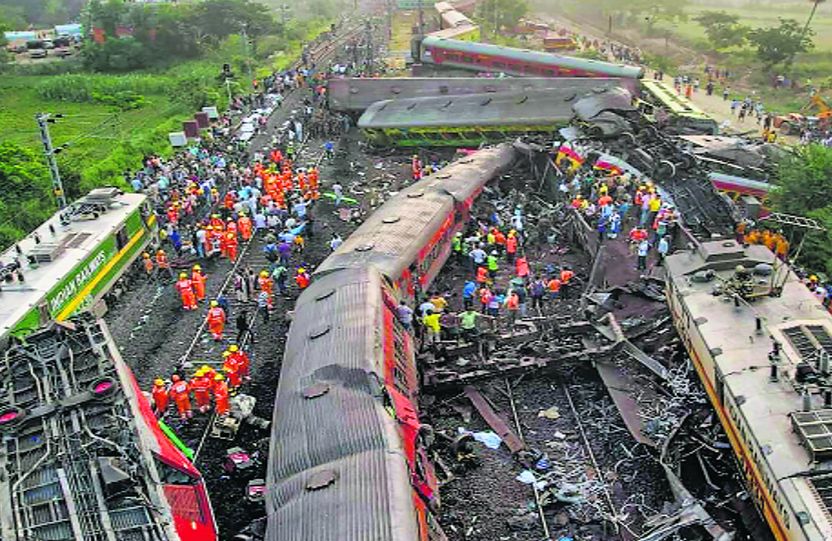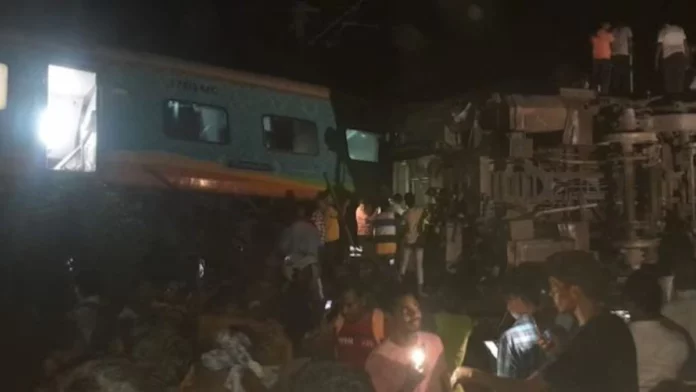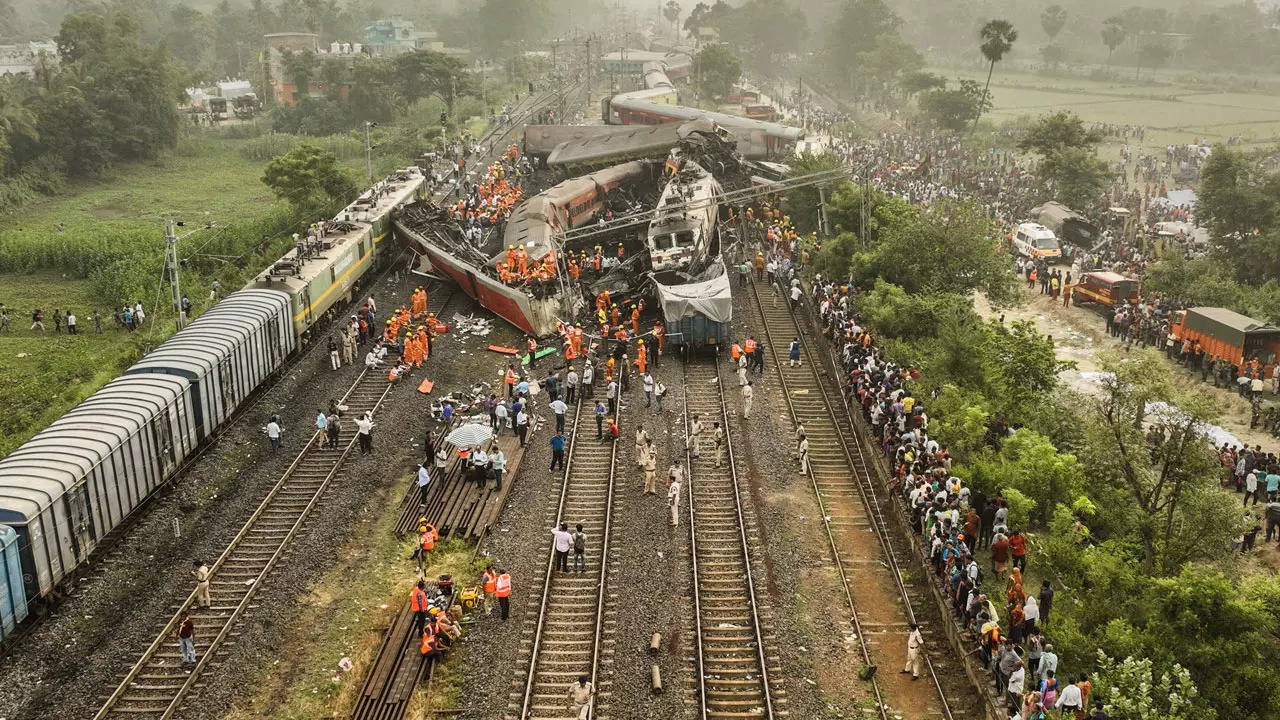Major Train Disaster in Odisha: Human Error Suspected as Initial Reports Emerge In what is being deemed as India‘s most catastrophic rail accident in over twenty years, the tragic incident in Odisha’s Balasore district has claimed the lives of at least 261 individuals. However, the exact cause of the crash, whether it was a technical glitch or human error, remains uncertain. Ashwini Vaishnaw, the Minister of Railways, arrived at the accident site on Saturday to assess the situation and pledged to conduct a comprehensive high-level inquiry into the mishap
Rescue operations are currently underway following a devastating collision involving the Coromandel Express, Bengaluru-Howrah Express, and a goods train. The government’s primary focus at this time is on facilitating rescue efforts and providing relief to those affected. Vaishnaw emphasized that a detailed investigation would be carried out, with the rail safety commissioner conducting an independent inquiry.
Odisha’s Deadly Train Disaster: Unraveling the Causes and Consequences
Initial reports from the signaling control room of the railways suggest that human error may have played a significant role in the accident. A video obtained by HT from the Kharagpur division’s signaling control room reveals that the Chennai-bound Coromandel Express veered onto a loop line near Bahanagar Bazar station, where a freight train was stationed, instead of staying on the main line. This information was provided by a senior railway official who reviewed the video. The footage clearly shows four railway tracks, including two main lines and two loop lines.
Loop lines are constructed within station areas, such as Bahanagar Bazar station, to accommodate additional trains and streamline operations. Typically, these loop lines have a length of approximately 750 meters to accommodate full-length goods trains. However, the Indian Railways has been encouraging the construction of longer loop lines. In this particular incident, the Coromandel Express, traveling at a speed of around 127 km per hour, collided with the goods train and derailed on the main line, as confirmed by an official from the railway minister’s office. Shortly thereafter, the Howrah-bound Yashwantnagar Express, approaching from the opposite direction, collided with the derailed Coromandel Express.
The exact circumstances and causes of the accident will be determined through the comprehensive inquiry ordered by the railway board. However, based on preliminary observations, it appears that human error played a significant role, according to an unnamed official. On the other hand, a retired railway official from the East Coast Railway zone suggested that technical glitches and signal issues might have contributed to the incident.
He mentioned that although the goods train was positioned on the loop line as indicated by the signal panel in the station manager’s office, a few of its rear carriages may have still been physically present on the main line when the Coromandel Express approached at high speed.
As the investigation progresses, authorities will work diligently to unravel the exact sequence of events leading to this devastating train accident. The focus remains on providing support to the affected individuals and implementing measures to prevent such incidents from occurring in the future.
In a heart-wrenching incident that has left a deep scar on the nation, Odisha’s Balasore district witnessed one of the deadliest train accidents in India in the past two decades. The horrifying mishap has claimed the lives of at least 261 people, sending shockwaves across the country. However, as the investigation unfolds, the exact cause of the crash, whether it was a result of a technical glitch or human error, still remains uncertain. Ashwini Vaishnaw, the Minister of Railways, visited the accident site on Saturday to assess the situation firsthand and has pledged to initiate a thorough high-level inquiry into the tragic event.
Efforts are currently underway to carry out rescue operations and provide much-needed relief to the affected individuals and families. Amidst this challenging time, the government is primarily focused on ensuring the safety and well-being of the survivors. Vaishnaw has reiterated the commitment to conduct a comprehensive investigation, with the rail safety commissioner leading an independent inquiry to ascertain the factors that contributed to this devastating incident.
Minister of Railways Vows Thorough Probe into Devastating Train Collision
Initial reports emerging from the signaling control room of the railways indicate that human error may have played a significant role in the unfortunate accident. A video, obtained and reviewed by HT, reveals crucial details from the Kharagpur division’s signaling control room. It shows the ill-fated Chennai-bound Coromandel Express veering onto a loop line near Bahanagar Bazar station, where an idle freight train was stationed at that time. Instead of remaining on the main line, the train took an unexpected turn, leading to the catastrophic collision. The video footage, analyzed by a senior railway official, displays four railway tracks, comprising two main lines and two loop lines.
Loop lines are specifically designed within station areas, like Bahanagar Bazar station, to facilitate smoother operations and accommodate additional trains. Typically, these loop lines have a standard length of around 750 meters, allowing for the handling of full-length goods trains. However, the Indian Railways has been actively promoting the construction of longer loop lines to enhance efficiency. In this unfortunate incident, the high-speed Coromandel Express, traveling at approximately 127 km per hour, collided with the stationary goods train and subsequently derailed on the main line. Within moments, the Howrah-bound Yashwantnagar Express, approaching from the opposite direction, collided with the derailed Coromandel Express, compounding the devastation.


